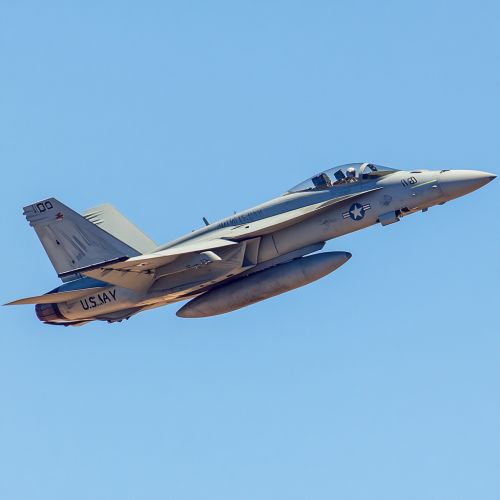U.S. Navy Fighter Weapons School
Introduction
The U.S. Navy Fighter Weapons School, commonly known as "TOPGUN," is a prestigious training program designed to enhance the combat capabilities of naval aviators. Established in 1969, the school has played a pivotal role in refining air combat tactics and techniques, ultimately contributing to the United States Navy's air superiority. This article delves into the history, curriculum, and impact of the U.S. Navy Fighter Weapons School, offering a comprehensive overview of its operations and significance.
History
The U.S. Navy Fighter Weapons School was established in response to the suboptimal performance of U.S. naval aviators during the Vietnam War. The Navy recognized the need for a specialized training program that focused on advanced air combat tactics. As a result, TOPGUN was founded at Naval Air Station Miramar in California. The program was initially developed by a group of experienced fighter pilots who sought to improve the skills and tactics of naval aviators.
The school's inception marked a significant shift in naval aviation training, emphasizing the importance of dogfighting skills and the effective use of aircraft weaponry. Over the years, TOPGUN has evolved to incorporate new technologies and tactics, adapting to the changing landscape of aerial warfare.
Curriculum
The curriculum at the U.S. Navy Fighter Weapons School is rigorous and comprehensive, designed to challenge even the most skilled aviators. The program typically lasts for several weeks and includes both classroom instruction and practical flight exercises. Key components of the curriculum include:
Air Combat Maneuvering
Air Combat Maneuvering (ACM) is a fundamental aspect of the TOPGUN curriculum. Pilots are trained in various dogfighting techniques, learning to exploit the strengths and weaknesses of their aircraft. The training emphasizes situational awareness, split-second decision-making, and the ability to anticipate an opponent's moves.
Weapons Systems
Understanding and effectively utilizing aircraft weaponry is crucial for naval aviators. The curriculum covers the operation and deployment of a wide range of weapons systems, including air-to-air missiles, guns, and electronic warfare tools. Pilots are taught to optimize their use of these systems in combat scenarios.
Tactics and Strategy
TOPGUN places a strong emphasis on tactics and strategy, teaching pilots to develop and execute complex combat plans. This includes the study of enemy tactics, the use of deception, and the coordination of multiple aircraft in joint operations. Pilots learn to adapt their strategies to different combat environments and threats.
Threat Analysis
A critical component of the curriculum is threat analysis, where pilots learn to assess and respond to potential adversaries. This includes studying the capabilities and limitations of enemy aircraft, as well as understanding the broader geopolitical context of potential conflicts.

Impact and Legacy
The impact of the U.S. Navy Fighter Weapons School on naval aviation cannot be overstated. Since its inception, TOPGUN has significantly improved the combat effectiveness of U.S. naval aviators. The program's emphasis on advanced tactics and training has contributed to the Navy's air superiority in numerous conflicts.
TOPGUN graduates have gone on to become leaders in naval aviation, bringing their expertise to bear in various operational and strategic roles. The school's influence extends beyond the U.S. Navy, as its training methods and tactics have been adopted by allied air forces around the world.
Evolution and Modernization
Over the decades, the U.S. Navy Fighter Weapons School has continually evolved to meet the challenges of modern warfare. The integration of advanced technologies, such as stealth aircraft and unmanned aerial vehicles (UAVs), has necessitated updates to the curriculum. TOPGUN instructors work closely with defense contractors and military researchers to ensure that the program remains at the cutting edge of aerial combat training.
The school's relocation to Naval Air Station Fallon in Nevada in 1996 provided access to expansive training ranges and state-of-the-art facilities, further enhancing its capabilities.
